Abstract
Neurons are generated in chick retina that are able to form synapses with striated muscle cells for only a brief period during embryonic development. The ability to form synapses is lost with a half-life of 21 hr. Retina neuron-myotube synapses form rapidly but soon are terminated. Chick embryo spinal cord neurons also form synapses with muscle cells for only a limited time during development, but these synapses are long lived. These results show that different classes of synapses turn over at different rates and suggest that part of the specificity of synaptic circuits may be acquired during development by a process of selection based on synapse termination rates.
Full text
PDF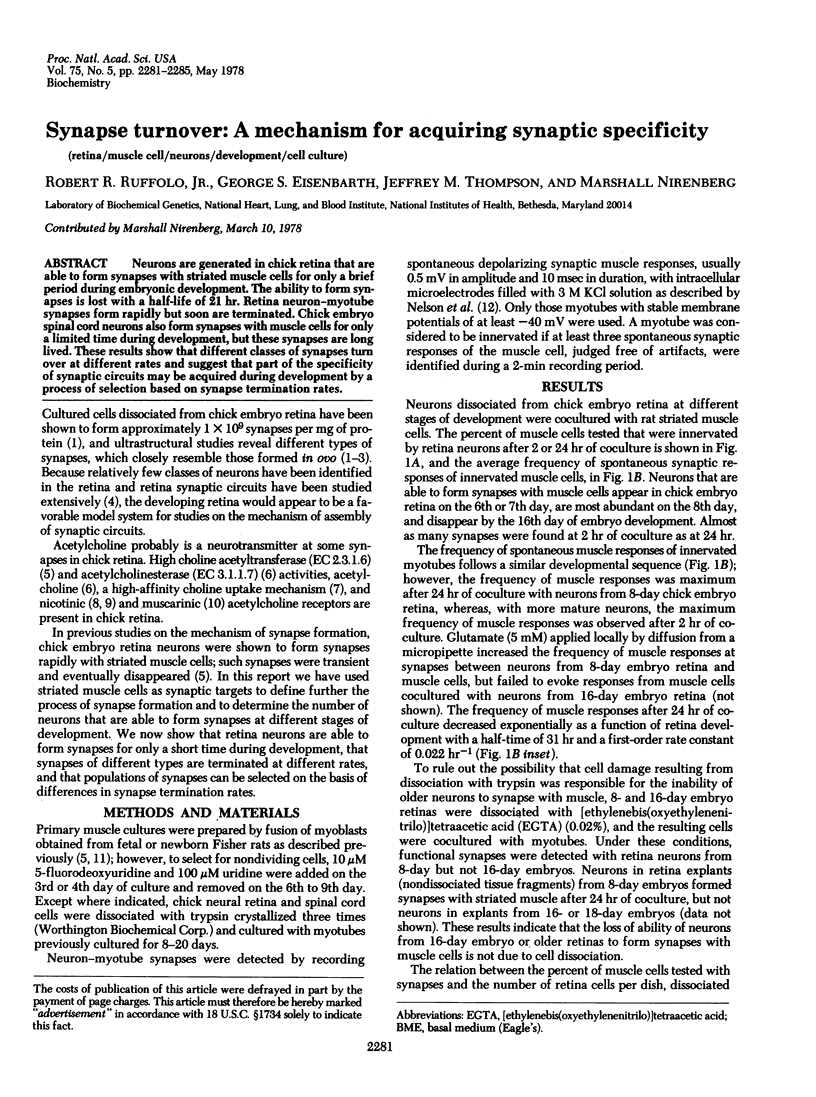
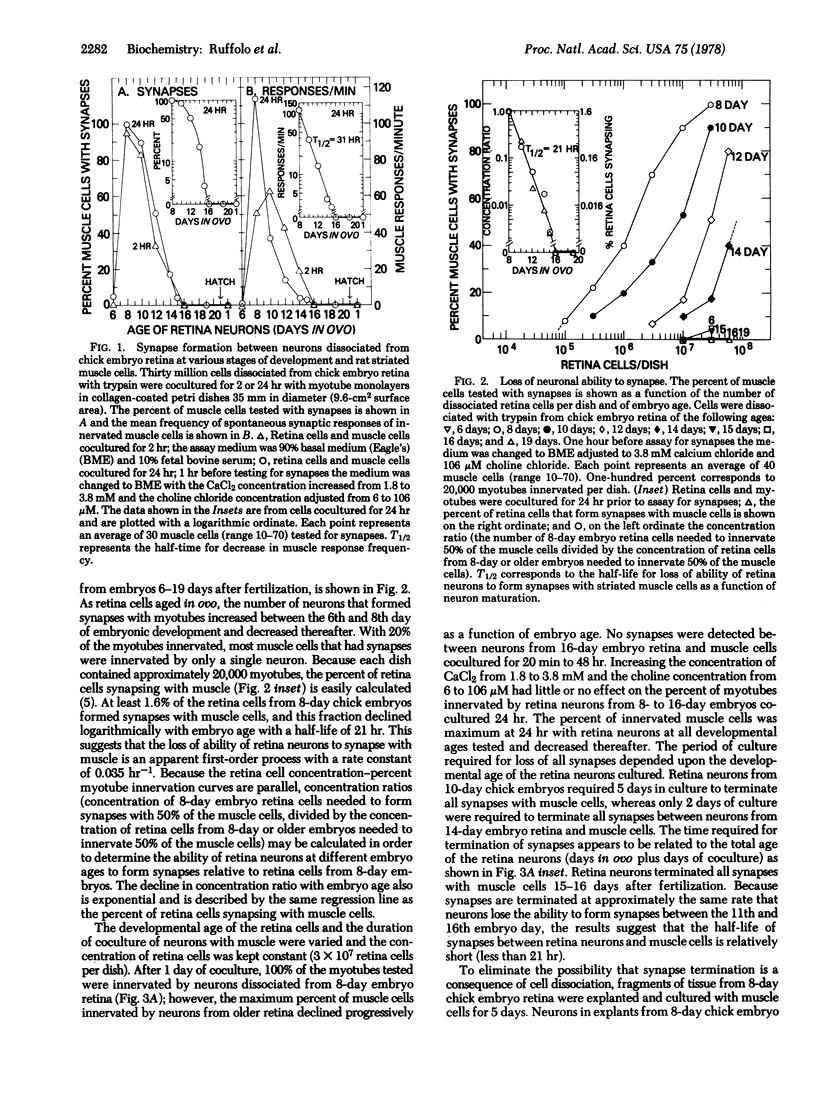
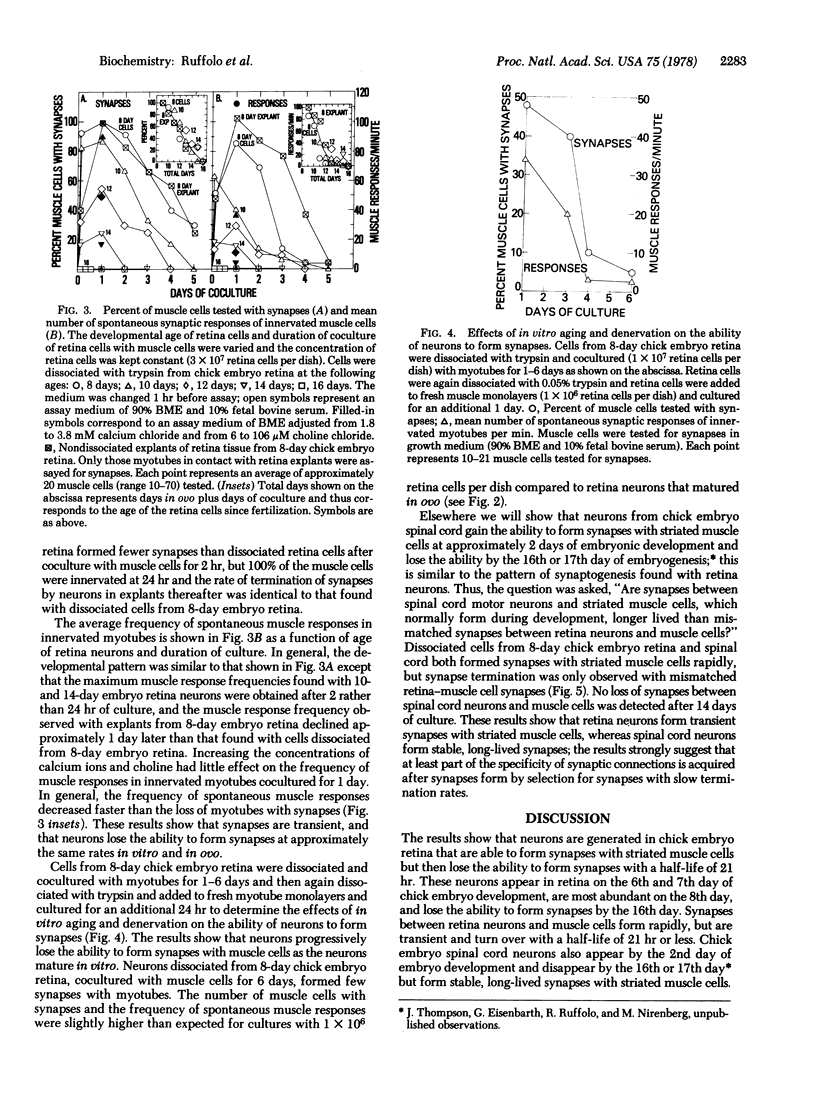
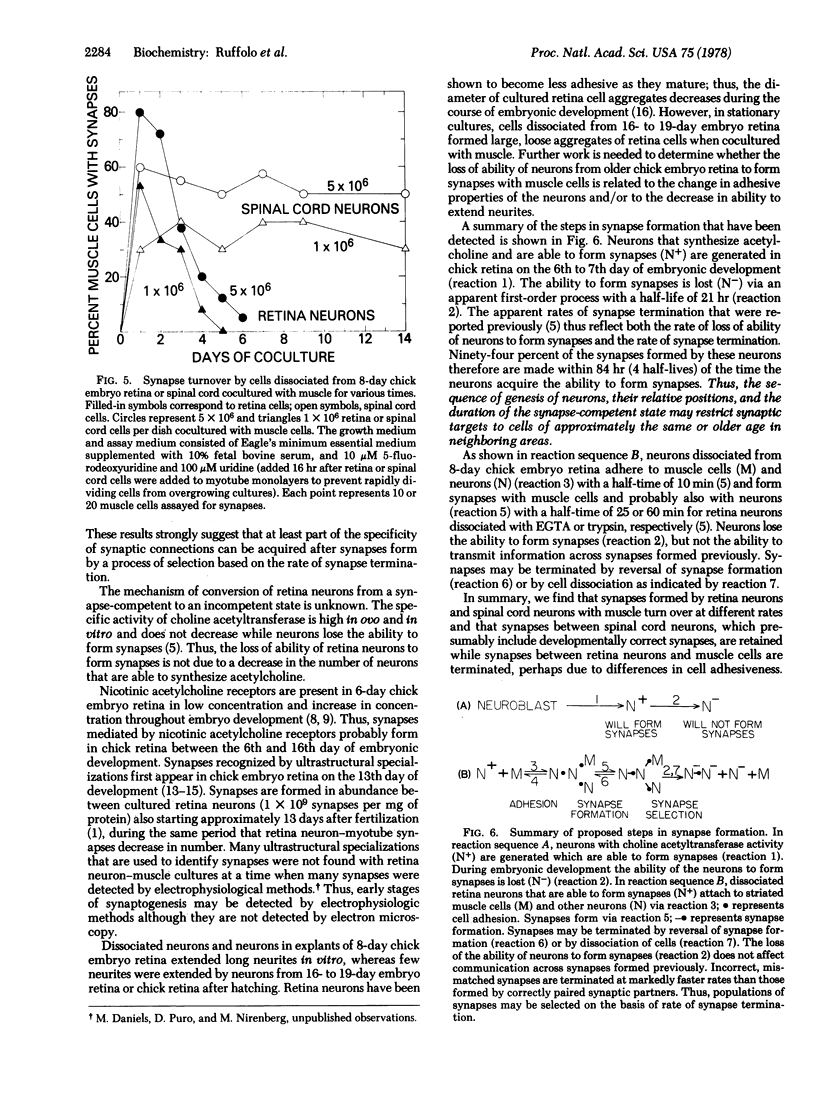
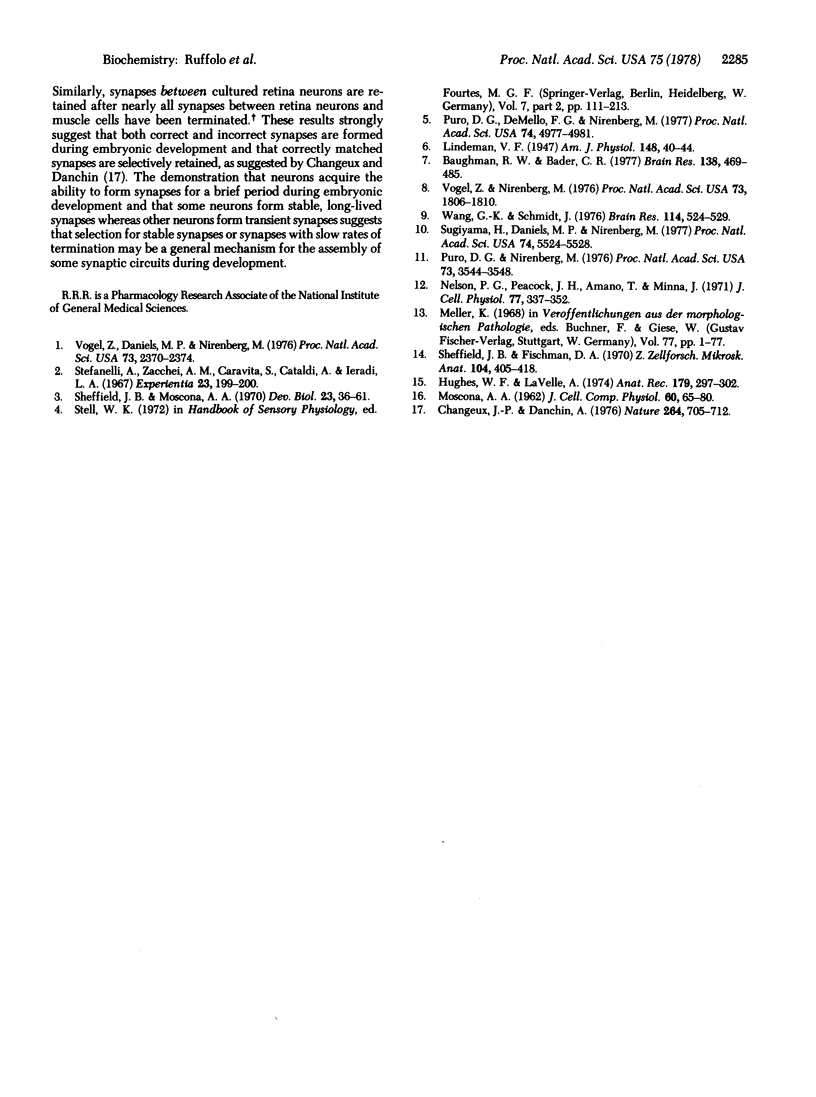
Selected References
These references are in PubMed. This may not be the complete list of references from this article.
- Baughman R. W., Bader C. R. Biochemical characterization and cellular localization of the cholinergic system in the chicken retina. Brain Res. 1977 Dec 23;138(3):469–485. doi: 10.1016/0006-8993(77)90684-9. [DOI] [PubMed] [Google Scholar]
- Changeux J. P., Danchin A. Selective stabilisation of developing synapses as a mechanism for the specification of neuronal networks. Nature. 1976 Dec 23;264(5588):705–712. doi: 10.1038/264705a0. [DOI] [PubMed] [Google Scholar]
- Hughes W. F., LaVelle A. On the synaptogenic sequence in the chick retina. Anat Rec. 1974 Jul;179(3):297–301. doi: 10.1002/ar.1091790302. [DOI] [PubMed] [Google Scholar]
- Nelson P. G., Peacock J. H., Amano T., Minna J. Electrogenesis in mouse neuroblastoma cells in vitro. J Cell Physiol. 1971 Jun;77(3):337–352. doi: 10.1002/jcp.1040770308. [DOI] [PubMed] [Google Scholar]
- Puro D. G., De Mello F. G., Nirenberg M. Synapse turnover: the formation and termination of transient synapses. Proc Natl Acad Sci U S A. 1977 Nov;74(11):4977–4981. doi: 10.1073/pnas.74.11.4977. [DOI] [PMC free article] [PubMed] [Google Scholar]
- Puro D. G., Nirenberg M. On the specificity of synapse formation. Proc Natl Acad Sci U S A. 1976 Oct;73(10):3544–3548. doi: 10.1073/pnas.73.10.3544. [DOI] [PMC free article] [PubMed] [Google Scholar]
- Sheffield J. B., Fischman D. A. Intercellular junctions in the developing neural retina of the chick embryo. Z Zellforsch Mikrosk Anat. 1970;104(3):405–418. doi: 10.1007/BF00335691. [DOI] [PubMed] [Google Scholar]
- Stefanelli A., Zacchei A. M., Caravita S., Cataldi A., Ieradi L. A. New-forming retinal synapses in vitro. Experientia. 1967 Mar 15;23(3):199–200. doi: 10.1007/BF02136284. [DOI] [PubMed] [Google Scholar]
- Sugiyama H., Daniels M. P., Nirenberg M. Muscarinic acetylcholine receptors of the developing retina. Proc Natl Acad Sci U S A. 1977 Dec;74(12):5524–5528. doi: 10.1073/pnas.74.12.5524. [DOI] [PMC free article] [PubMed] [Google Scholar]
- Vogel Z., Daniels M. P., Nirenberg M. Synapse and acetylcholine receptor synthesis by neurons dissociated from retina. Proc Natl Acad Sci U S A. 1976 Jul;73(7):2370–2374. doi: 10.1073/pnas.73.7.2370. [DOI] [PMC free article] [PubMed] [Google Scholar]
- Vogel Z., Nirenberg M. Localization of acetylcholine receptors during synaptogenesis in retina. Proc Natl Acad Sci U S A. 1976 Jun;73(6):1806–1810. doi: 10.1073/pnas.73.6.1806. [DOI] [PMC free article] [PubMed] [Google Scholar]
- Wang G. K., Schmidt J. Receptors for alpha-bungarotoxin in the developing visual system of the chick. Brain Res. 1976 Sep 24;114(3):524–529. doi: 10.1016/0006-8993(76)90976-8. [DOI] [PubMed] [Google Scholar]


